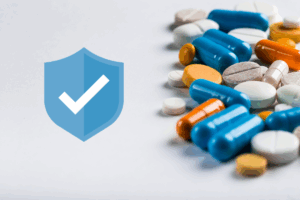What’s So Special About Specialty Drugs?
Although there is no industry standard definition for specialty drugs, they are typically extremely high-cost prescription drugs, primarily used to treat complicated and chronic conditions. The drugs included on a specialty drug list may vary between vendors, however there are several features that are common among specialty drugs:
- Extremely high cost
- Limited pharmacy distribution
- Special handling and administration
- Highly-intensive patient monitoring and/or education
- Treat complex conditions
The rate at which specialty drugs are expanding is incredible as well— in 1990, there were only 10 specialty drugs on the market and now 31 new specialty drugs are slated to be approved just in 2017[1]. Under the pharmacy benefit, specialty drugs are utilized by one percent to two percent of individuals, yet average 40 percent of drug spend. In addition, for every dollar of specialty drug spend seen on the pharmacy benefit side, there is typically an equivalent amount seen under the medical benefit. Under the medical benefit, specialty drugs are utilized by three percent to four percent of individuals who represent on average 25 percent of medical costs. Consequently, employers are faced with the issue of rising specialty drug costs and the possibility that a large amount of their benefit dollars will be consumed by specialty drugs.
Best Way to Maximize Savings
The key for employers to set up a quality, yet affordable specialty drug benefit plan involves multiple approaches:
- Ensure use is in accordance with FDA-approved indications and current clinical guidelines
- Minimize potential waste by placing quantity limits on one prescription fill or incorporating one month’s supply at a time
- Leverage your Pharmacy Benefit Manager (PBM)’s formulary or preferred drug strategies
- Implement formulary exclusions to steer participants towards lower-cost options when available
- Work with a specialty network
Rebates, Rebates, Rebates!
Since drug companies pay PBMs billions of dollars each year in rebates, the financial impact of rebates is significant when it comes to specialty drugs. Larger employers are more likely to receive the entire rebate amount for specialty drugs than smaller employers. However, only 75 percent of employers with over 5,000 lives received a portion of rebates for specialty drugs in 2015[2], which means 25 percent of large employers (and an even greater percentage of small employers) missed out on a lot of rebates!
National CooperativeRx returns 100% of rebates to all members, regardless of how many lives are covered under their plan. The Cooperative was able to negotiate this as part of our Master Contract with our PBM provider, due to the large size of our membership.
The Final Word
A sound plan design is the key to drive performance and favorable outcomes. The most important aspect to consider when designing a benefits plan is to ensure it is designed specifically for your group and with your best interests in mind. Use a trusted partner who will provide sound recommendations, plan oversight and advocacy on your behalf to proactively manage not just your specialty drug spend, but your overall pharmaceutical investments. This will help keep your specialty drug costs reasonable, while still advocating for the health of your participants.
[1] Santye, Lauren. “Specialty Pharmacy Drugs: 2016 Approvals and 2017 Forecasts.”Specialty Pharmacy Times. Specialty Pharmacy Times, 26 Jan. 2017. Web. 7 June 2017.
[2] Fein, Ph.D. Adam J. “A Tale as Old as Time: Examining Employer-PBM Rebate Relationships for Specialty Drugs.” Drug Channels. Drug Channels, 28 Mar. 2017. Web. 23 June 2017.




